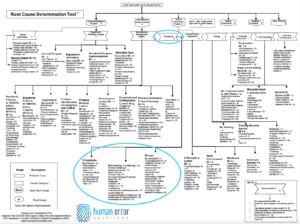
Step #3 Root Cause Determination: Procedures
In a previous blog post, we discussed the Training topic. Today we are going to learn how procedures could be the main reason for errors of execution on the manufacturing floor.
Procedures are rules, and we create rules when we don’t trust that people will do the right thing by themselves. Procedures are important not because they are regulated; they are regulated because they are important. Every operation requires a procedure whether their existence is “inspired” by a regulation or because you want to have a flawless, uniform, and reliable operation.
A responsible organization must have procedures.
Errors attributable to written procedures include instances in which a procedure was not used to do the job, the procedure was followed incorrectly due to inadequacies within the procedure, or the procedure was wrong or incomplete. Before we dive in let’s take a look at these facts[1] about procedures:
- Regardless of the procedure format, a procedure can only be as effective as the task information it contains.
- A procedure can look good without containing accurate, complete information.
- Fancy formats may be just that…fancy but not practical
- The effort required to make a procedure look great is minimal compared to the effort it takes to create and maintain an effective procedure.
- Maintaining an effective procedure program takes more time than most people are willing to invest, though doing so will yield large rewards.
Now that we got that out of the way, let’s look at this example:
Case #HES002- Procedures
Human Failure: Out of action level in Room #12345 was obtained in the surface sample after shutdown activities.
Findings: The microorganism found was a ubiquitous in nature being found in soil, dust, water, plants, humans, and animals and is compatible with activities performed during shutdown which includes preventive maintenance and equipment special testing where the equipment is disassembled and exposed to the environment.
Even though the procedure has detailed instructions how to perform minor and major cleanings, it fails to include instructions for cleaning after a shutdown period.
Root cause: Procedure wrong or incomplete, situation not covered.
Root Cause Code as per Root Cause Determination Tool (below)
Problem Type: Human Performance Problem = C
Root Cause Category: Procedures = 4
Near Root Cause: Wrong or Incomplete = c
Root Cause: Situation Not Covered = 06
ROOT CAUSE CODE: C4c06
Corrective action: Include instructions for abnormal situations like cleaning after shutdown activities.
Preventive Action: Create instructions for other abnormal situations in other areas where the circumstances are similar.
In this example, we can see that when we deep dive and look for the reasons why people make mistakes we can find that those actions are not exclusive from one individual, but that it does not matter who follows the procedure; it’s destined to fail.




